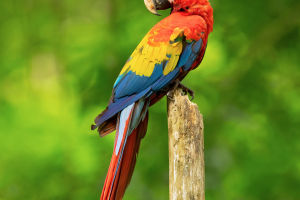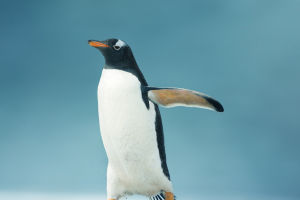Egrets are a mesmerizing sight to behold, their snowy white plumage and slender necks exuding elegance and grace as they move through wetlands, rivers, and coastal areas.
These striking birds belong to the heron family and are often mistaken for their heron relatives due to their similar build and behavior.
Meet the Egrets: Who Are They?
1. Great Egret (Ardea alba)
The Great Egret is the largest of the egret species, easily recognized by its impressive size, long neck, and yellow bill. Standing at about 3.3 feet tall with a wingspan of up to 5.5 feet, this bird is a true icon of elegance. With its all-white plumage and slender black legs, the Great Egret is often spotted wading gracefully through shallow waters in search of fish, amphibians, and small mammals. During the breeding season, it displays long, flowing plumes on its back, adding a dramatic touch to its already stunning appearance.
2. Snowy Egret (Egretta thula)
Smaller than the Great Egret, the Snowy Egret is known for its bright yellow feet, black legs, and striking black bill. This medium-sized egret measures about 2 feet tall and has a wingspan of up to 3.3 feet. The Snowy Egret’s plumage is all white, and during the breeding season, it showcases long, delicate plumes on its head, neck, and back. Known for its quick movements and lively hunting style, the Snowy Egret is often seen darting through shallow waters or marshes, chasing after fish and invertebrates.
3. Cattle-Egret (Bubulcus ibis)
The Cattle-Egret is a small, stocky egret that can often be found in pastures, fields, and other areas away from water. Unlike its relatives, the Cattle-Egret has a shorter neck and a distinctive yellowish-orange bill. It measures about 1.6 feet tall with a wingspan of up to 3.3 feet. True to its name, the Cattle-Egret is often seen foraging near livestock, feeding on insects disturbed by grazing animals. During the breeding season, it develops beautiful orange-buff plumes on its head, chest, and back.
Get to Know the Great Egret
Video By Forest Preserve District of Will County
The Habitats of Egrets
Egrets thrive in a variety of habitats, but they are most commonly associated with wetlands, marshes, rivers, lakes, and coastal regions. These birds rely on these aquatic environments for food, as their diet primarily consists of fish, amphibians, reptiles, insects, and crustaceans. Egrets are also known to adapt to more urban areas, especially the Cattle-Egret, which can be found in fields, farms, and even cities.
Egrets are highly adaptable and can be found on every continent except Antarctica. The Great Egret, for instance, has one of the widest ranges among egret species, being found across North America, Europe, Asia, Africa, and Australia. The Snowy Egret is native to the Americas, while the Cattle-Egret has expanded its range to nearly every continent, becoming one of the most widespread bird species.
Feeding Habits and Hunting Techniques
Egrets are skilled hunters and have developed a variety of techniques to catch their prey. They typically use a “stand-and-wait” approach, remaining still in shallow water and striking quickly with their sharp bills when a fish or other prey comes within reach. This hunting method requires incredible patience and precision.
Some egrets, like the Snowy Egret, employ more dynamic tactics, such as chasing their prey through the water, using their bright yellow feet to stir up fish or other small creatures. The Cattle-Egret, on the other hand, follows grazing animals, catching insects that are disturbed as the animals move through grasslands or fields. These diverse feeding strategies allow egrets to thrive in various environments, showcasing their adaptability and resourcefulness.
Egrets are more than just beautiful birds—they are symbols of resilience, adaptability, and grace. From their impressive hunting skills to their diverse habitats, egrets captivate the imagination and inspire a sense of wonder in all who encounter them. As we continue to protect their environments and learn more about these fascinating creatures, we ensure that their elegance and grace remain a part of our natural world.


